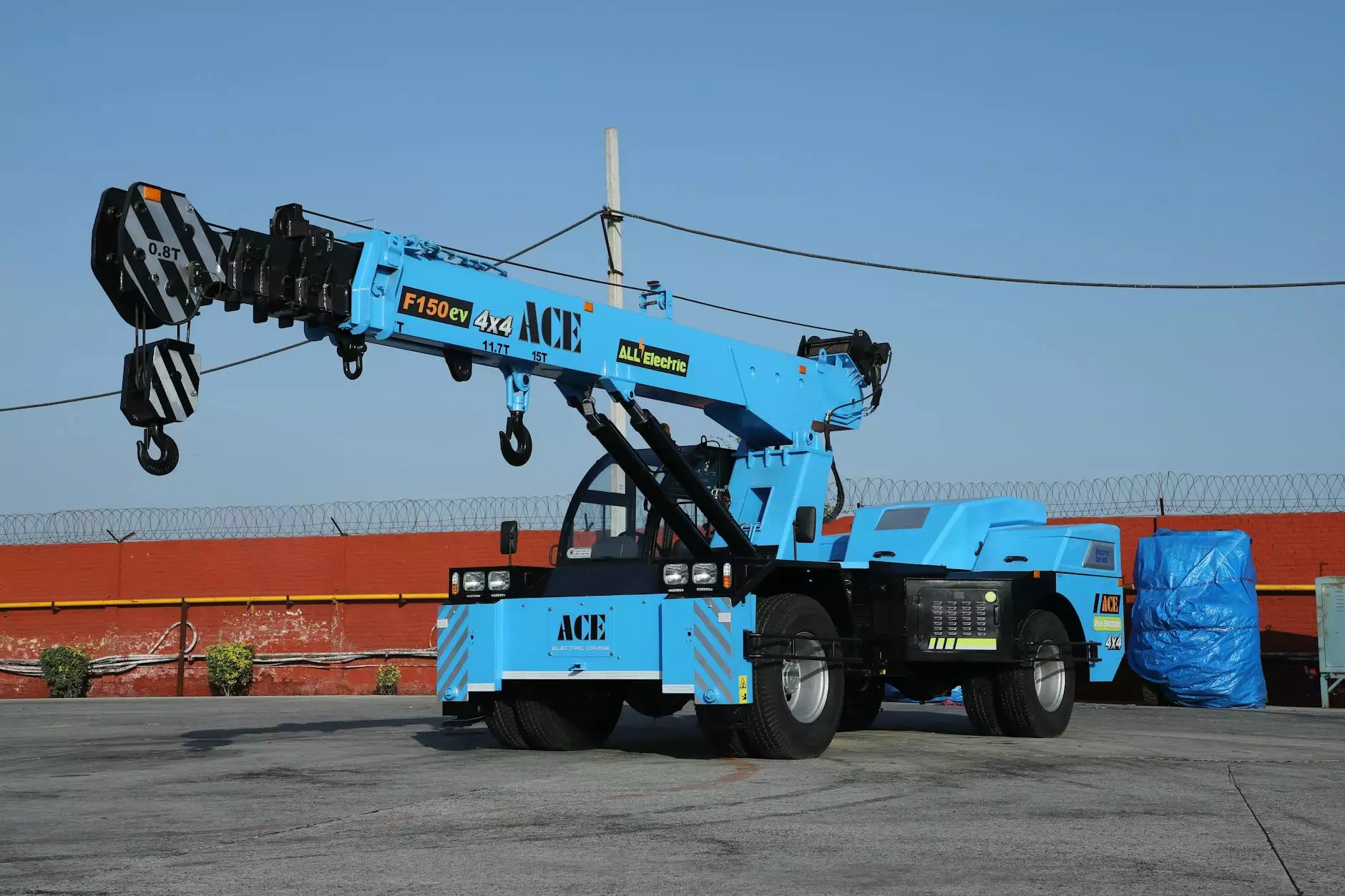The Ultimate Guide to Lift Kits: Elevate Your Off-Road Experience

If you are an automotive enthusiast, particularly one who loves the thrill of off-roading, then you already know how crucial modifications can be for enhancing your vehicle's performance. One of the most popular modifications among off-road vehicles is the lift kit. In this comprehensive guide, we will explore lift kits extensively, covering their benefits, types, installation processes, and considerations to keep in mind. Get ready to take your off-roading experience to new heights!
What is a Lift Kit?
A lift kit is a collection of parts that is used to raise the height of a vehicle's suspension. Whether you're driving a pickup truck, SUV, or any off-road vehicle, a lift kit increases ground clearance, enhances aesthetics, and improves off-road capabilities. The primary purpose of a lift kit is to enable larger tires, which enhance traction and handling over rough terrains.
Benefits of Installing a Lift Kit
- Improved Ground Clearance: The most noticeable benefit of a lift kit is the increased ground clearance. This is essential for off-roading, as it allows vehicles to navigate over obstacles like rocks, stumps, and deep ruts without damage.
- Better Visibility: A higher ride height provides better visibility of the road ahead, which can be a significant advantage in off-road conditions.
- Ability to Fit Larger Tires: Installing a lift kit allows you to fit larger tires, which can enhance traction, stability, and overall performance during off-road adventures.
- Enhanced Suspension Performance: Many lift kits improve suspension travel and articulation, allowing the vehicle to handle rough terrains more effectively.
- Aesthetics: Lifted trucks and SUVs have a commanding presence on the road, providing an aggressive look that many drivers find appealing.
- Improved Approach and Departure Angles: By raising the vehicle, a lift kit improves the angles at which the vehicle can approach and depart from obstacles, minimizing the risk of damage.
Types of Lift Kits
There are several types of lift kits available, each designed for specific purposes and vehicle types. Understanding the distinctions can help you make an informed decision. Here are the primary types:
1. Body Lift Kits
Body lift kits raise the vehicle's body away from the chassis. This type of lift kit typically does not change the suspension geometry significantly and is generally less expensive than suspension lift kits. Body lifts are ideal if you want to achieve a lifted look without altering the suspension system.
2. Suspension Lift Kits
Suspension lift kits involve a complete overhaul of the vehicle's suspension system. They often include new shocks, springs, and control arms, significantly altering the vehicle's ride and handling characteristics. Suspension lift kits offer the best off-road performance and are suitable for serious off-road enthusiasts.
3. Leveling Kits
Leveling kits are designed to raise the front of the vehicle to match the rear height, which is particularly useful for trucks that sag in the front due to heavy loads. This type of kit is typically less intensive than full suspension kits and can improve the vehicle's appearance and handling.
How to Choose the Right Lift Kit
Selecting the appropriate lift kit for your vehicle depends on various factors, including your off-road needs, budget, and vehicle specifications. Here are some tips to help you choose wisely:
- Determine Your Off-Road Goals: Consider whether you plan on using your vehicle primarily for off-roading or if you prefer a combination of on-road and off-road use.
- Check Compatibility: Ensure that the lift kit you choose is compatible with your vehicle's make and model. Some lift kits are specific to certain vehicles.
- Understand Lift Height: Think about how much lift you want. Common lift heights range from 2 inches to 6 inches or more. Higher lifts may provide better off-road capacity but can affect handling.
- Consider Installation: Decide whether you will install the lift kit yourself or hire a professional. Some kits are easier to install than others.
- Factor in Budget: Lift kits come in a wide range of prices. Consider your budget while ensuring you invest in a quality product.
Installation of Lift Kits
Installing a lift kit can be a complex process, especially for suspension lift kits. Here’s an overview of the typical installation steps:
Preparation
Before installation, gather all necessary tools and materials. Ensure the vehicle is parked on a level surface, and secure it with wheel chocks. If you're using a suspension lift kit, you may need a hydraulic jack and jack stands.
Remove Existing Suspension Components
For suspension lift kits, you’ll need to remove the old shocks, springs, and other components. This may require loosening bolts and utilizing a spring compressor for safe removal.
Install New Suspension Parts
Follow the manufacturer's instructions to install the new suspension components. Make sure everything is tightened to the specified torque settings to ensure safety and performance.
Adjust Alignment
After installation, it's critical to get a wheel alignment. Adjusting the alignment will ensure that the vehicle handles correctly and that the tires wear evenly.
Popular Lift Kit Brands
Several reputable brands manufacture high-quality lift kits. Here are some of the most recognized names in the industry:
- Rough Country: Known for affordable and reliable lift kits that deliver excellent off-road performance.
- Skyjacker: Offers a variety of suspension lift kits suitable for various vehicles, focusing on performance and off-road capabilities.
- Bilstein: Renowned for their shock absorbers and suspension systems, Bilstein consistently delivers high-quality performance components.
- Fox Racing Shox: A premium brand known for high-performance shocks and suspension systems tailored for serious off-road enthusiasts.
- ProComp: Offers a wide selection of lift kits and suspension components designed for off-road enthusiasts.
Considerations After Installing a Lift Kit
After installing a lift kit, be aware of a few considerations that may affect your vehicle's performance and safety:
- Vehicle Handling: A lifted vehicle may handle differently, particularly during cornering. Take time to adjust to the new handling characteristics.
- Rigorous Maintenance: Off-roading can put additional strain on components, so ensure you maintain your vehicle regularly, checking the suspension, tires, and brakes.
- Check Local Laws: Some regions have specific laws regarding vehicle modifications, including lift kits. Ensure compliance with local regulations to avoid penalties.
- Tire Size and Width: After lifting your vehicle, you may want to upgrade to larger tires. Ensure that the new tires do not rub against the body or suspension components.
Conclusion
Installing a lift kit can significantly transform your vehicle's performance, especially if you enjoy off-roading. By understanding the types of lift kits available, their benefits, and the installation process, you can make an informed decision on enhancing your vehicle. Remember, the right lift kit will elevate not only your vehicle but also your off-road adventures to new heights. If you're ready to take the plunge, visit offroad-zone.com for top-quality lift kits and parts tailored for your needs!









